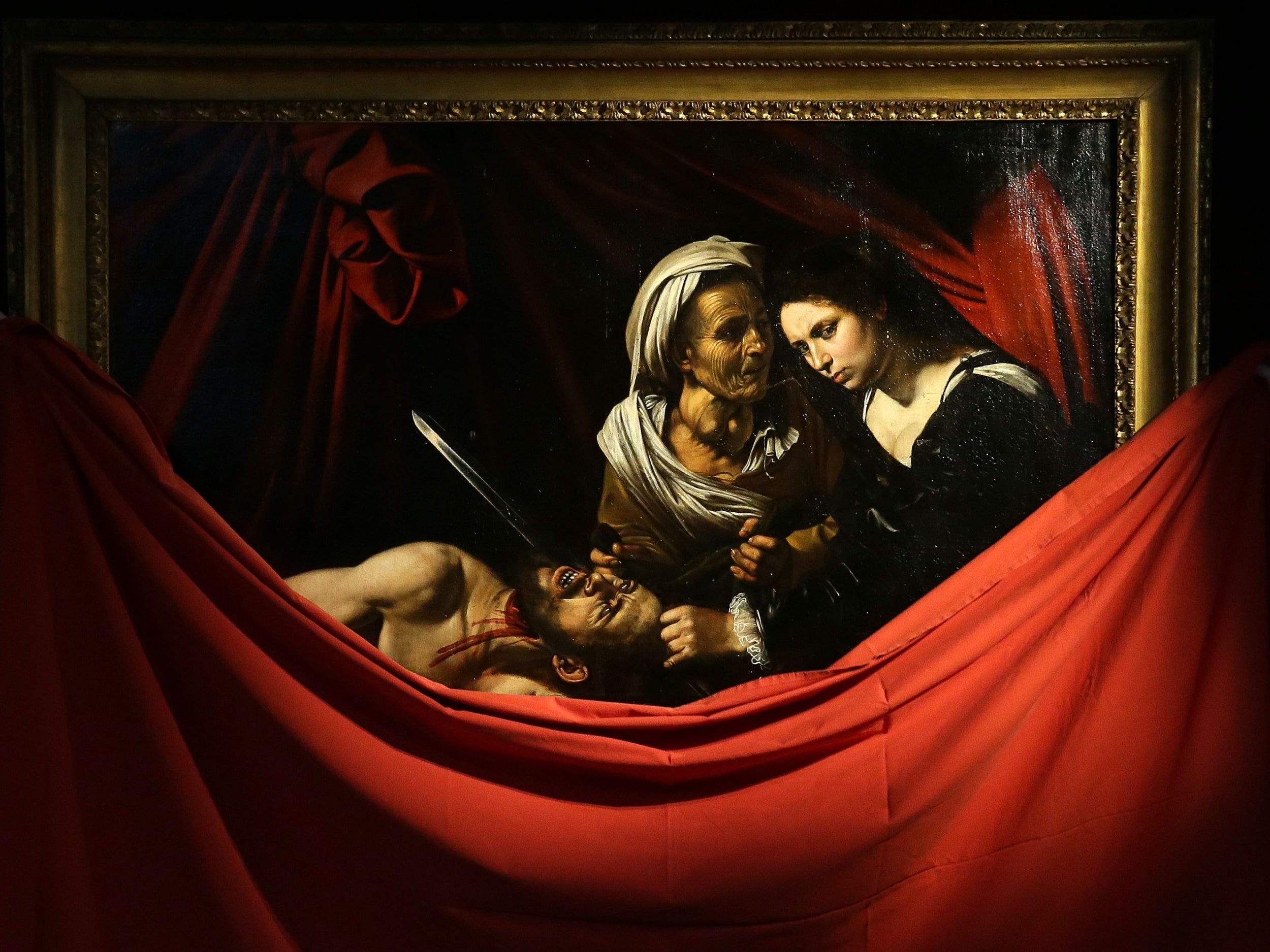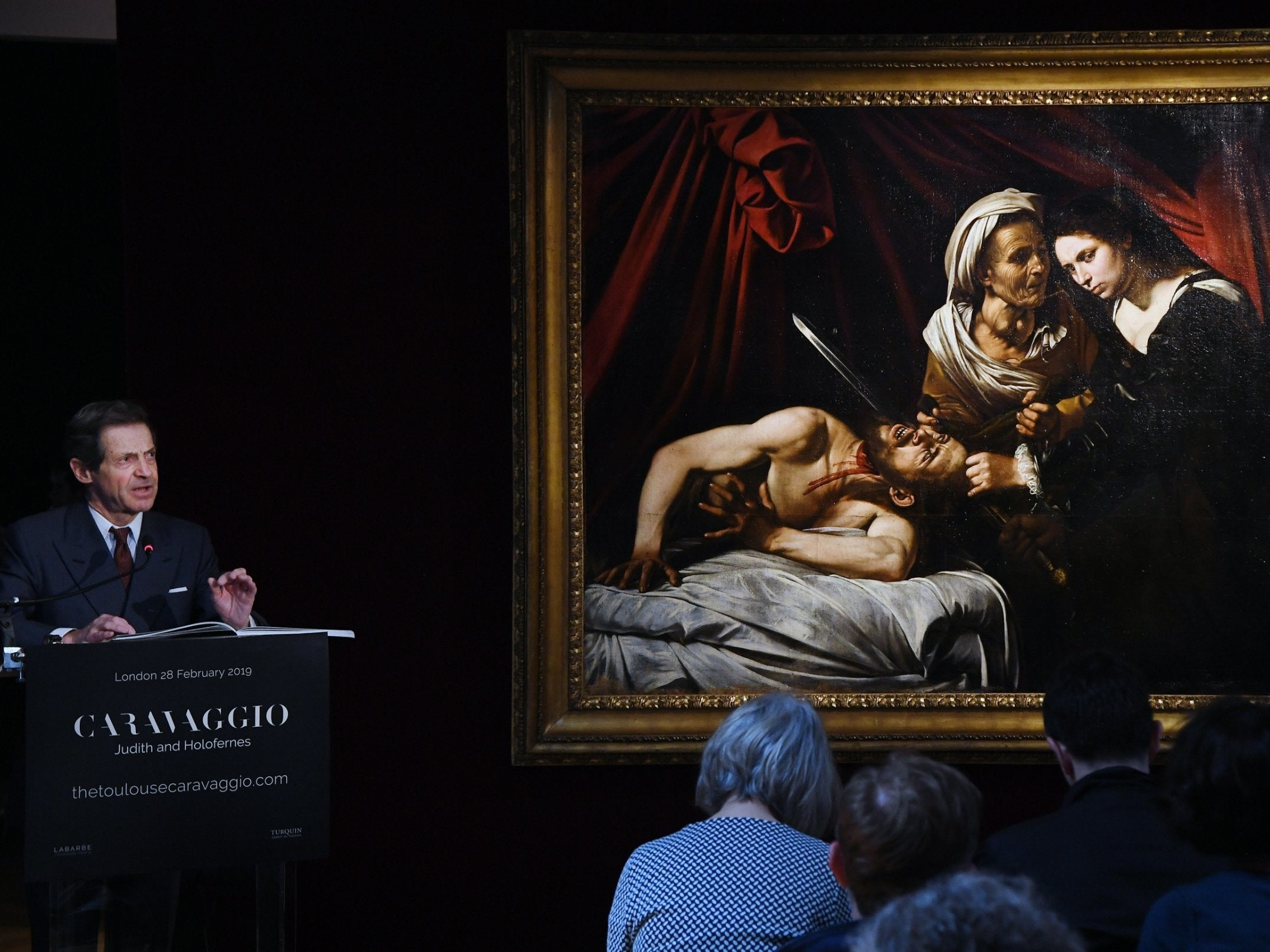Lost Caravaggio painting found in attic after burglars left it behind could be worth over £100m
‘Burglars broke into the attic and stole many things ... Fortunately, our painting was not adequate’

A lost Caravaggio painting thought “inadequate” and worthless by burglars who left it behind in an attic is expected to fetch well over £100m at auction this summer.
The Italian master’s work Judith and Holofernes went on display in London earlier this week after it was restored by fine art experts.
The painting turned up five years ago after spending the past century in the dusty corner of a farmhouse attic in the French city of Toulouse.
Thieves who broke into attic only a few years before it was discovered took bottles of perfume and several other items, but left the Caravaggio behind because they thought it “inadequate” and worthless, said auctioneer Marc Labarbe who believes the biblically themed work could sell for up to £129m when it goes under the hammer in June.
He added that the work had been lying against a wall among the farmhouse owner’s old clothes, family antiques and crockery.
“One of my clients was clearing his attic and he needed two men to help him. It took a year to sell all the antiquities,” he said. “Clocks, toys, pieces of religion, in good and bad condition, clothes, crockery, as well as many things of no interest. Everything was very dusty.
“I have to tell you that a few years before, burglars broke into the attic and stole many things, including eau de parfum bottles. Fortunately, our painting was not adequate.”
Paris-based art appraiser Eric Turquin said Judith And Holofernes was painted in 1607.
Mr Turquin has accompanied the painting to London to present the case for it as a genuine Caravaggio.

The work depicts the biblical tale of Judith, a widow from the city of Bethulia, who breaks the siege of her home by seducing the Assyrian leader and beheading him.
It is Caravaggio’s second version of the same subject, with the first painted in Rome around 1600.
The Louvre Museum reportedly turned down the chance to buy the painting, but Mr Turquin claimed the decision had no bearing on the authenticity of the work.
The discovery means there are now 68 known paintings attributed to the artist, who died in 1610 of suspected lead poisoning from his paint.
The painting will be sold without reserve on 27 June in Toulouse at the La Halle aux Grains. It will be on display at Colnaghi gallery in Bury Street from 1 March until 9 March.
Additional reporting by Press Association
Join our commenting forum
Join thought-provoking conversations, follow other Independent readers and see their replies
Comments